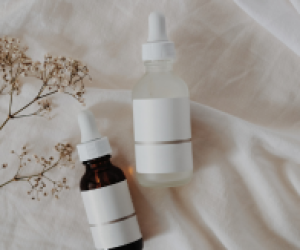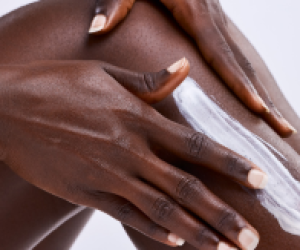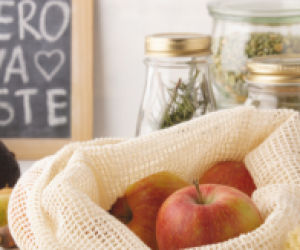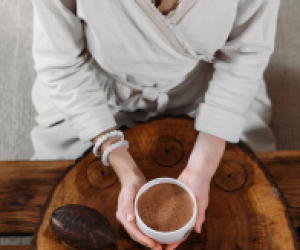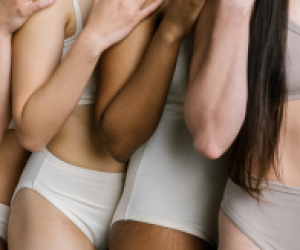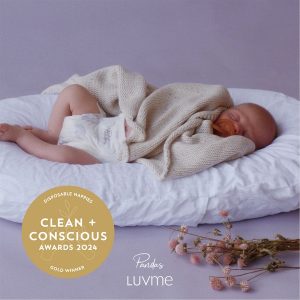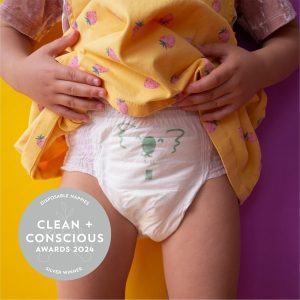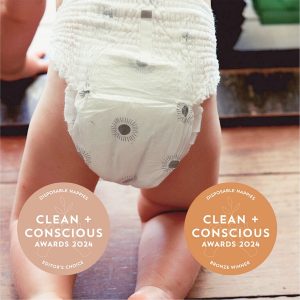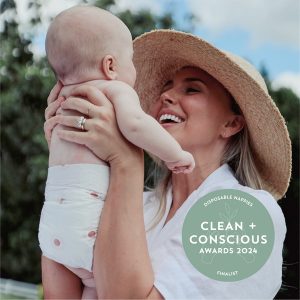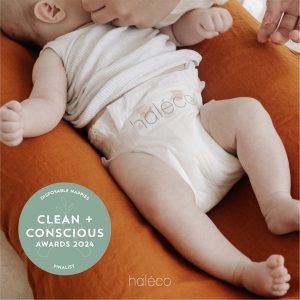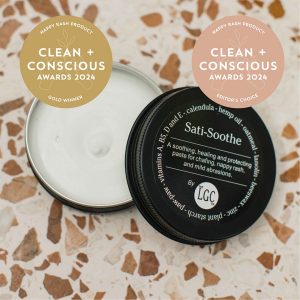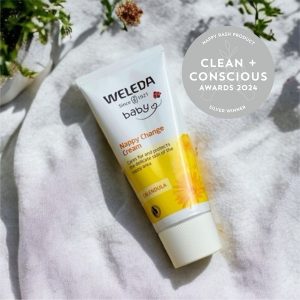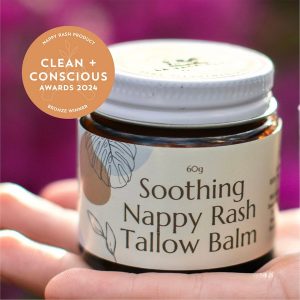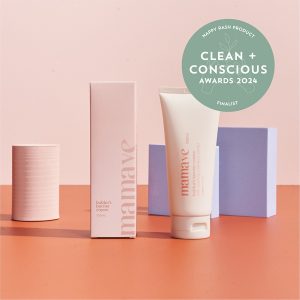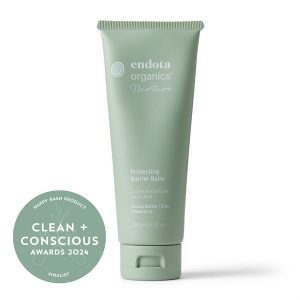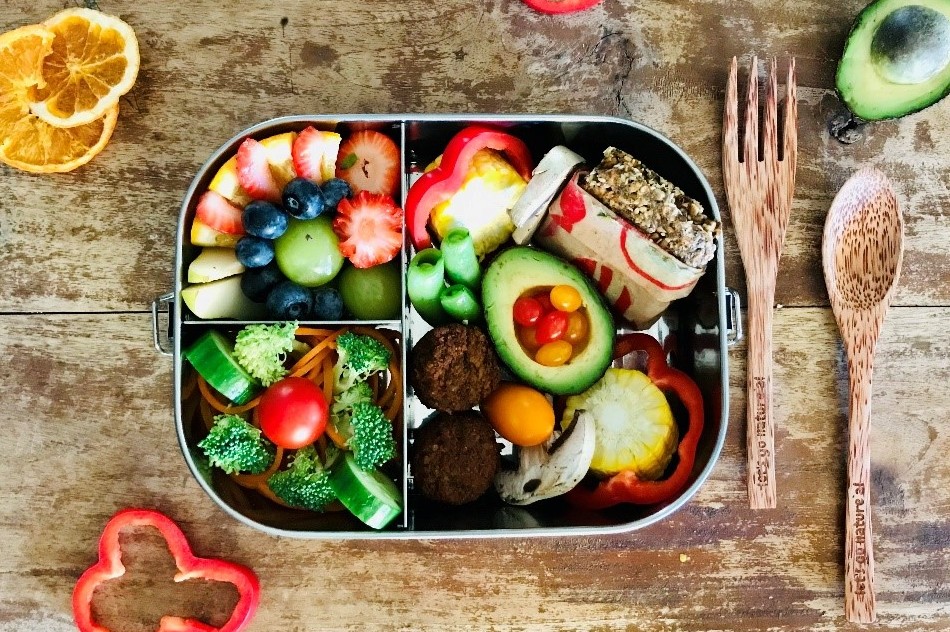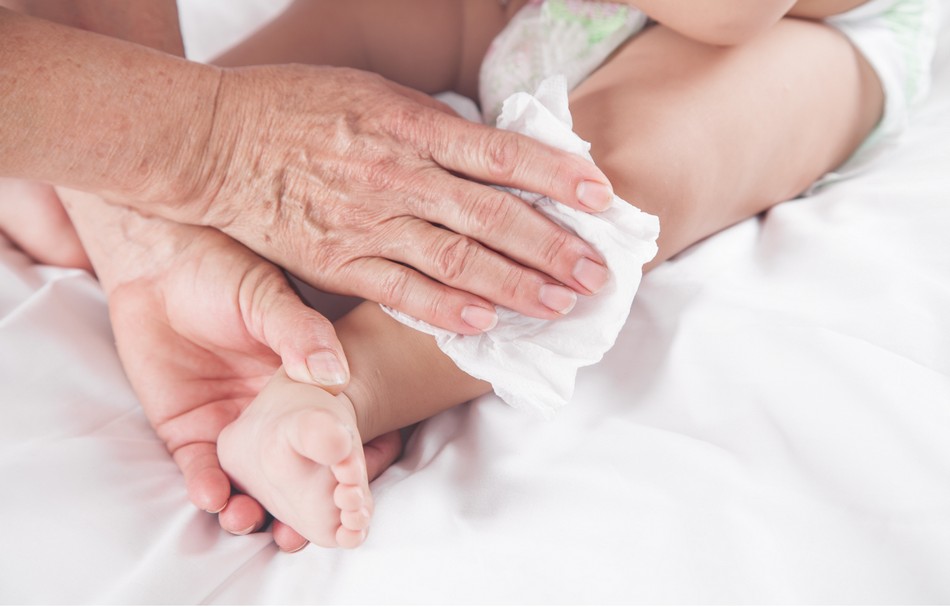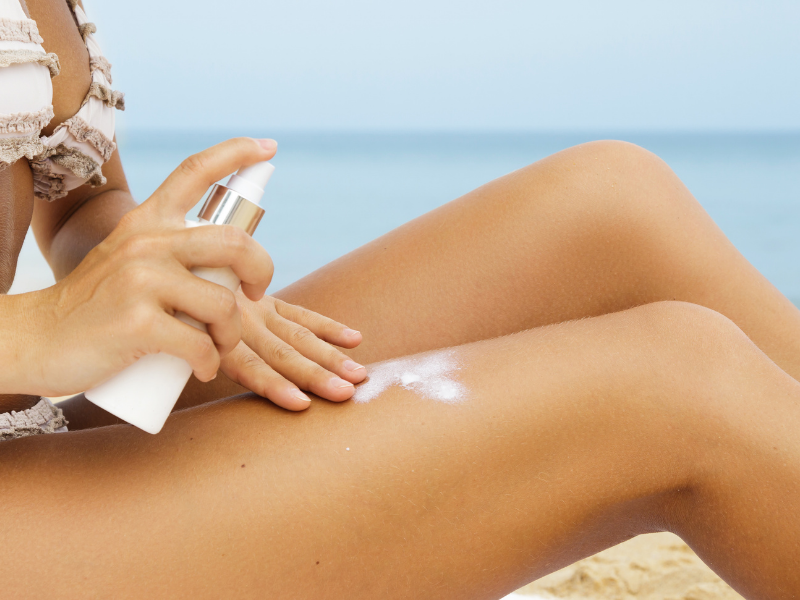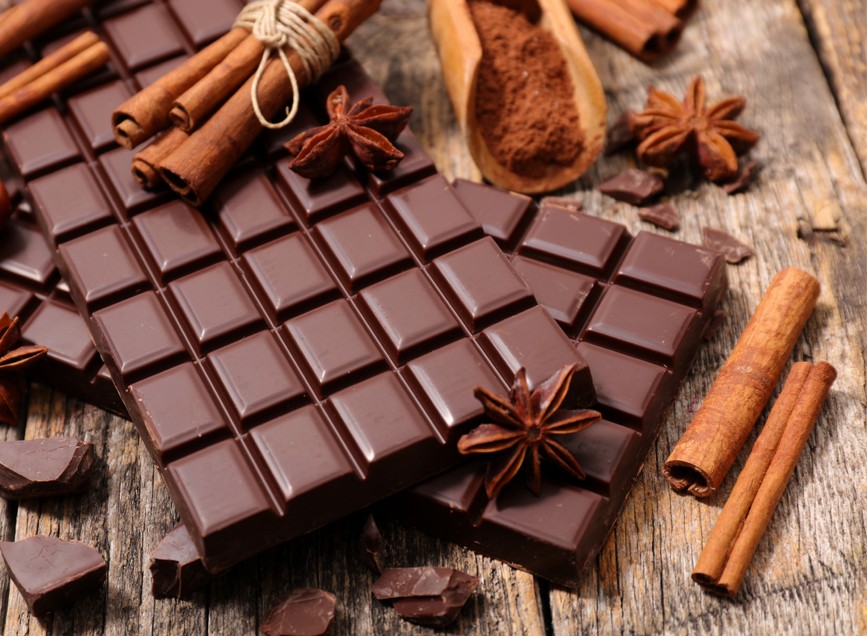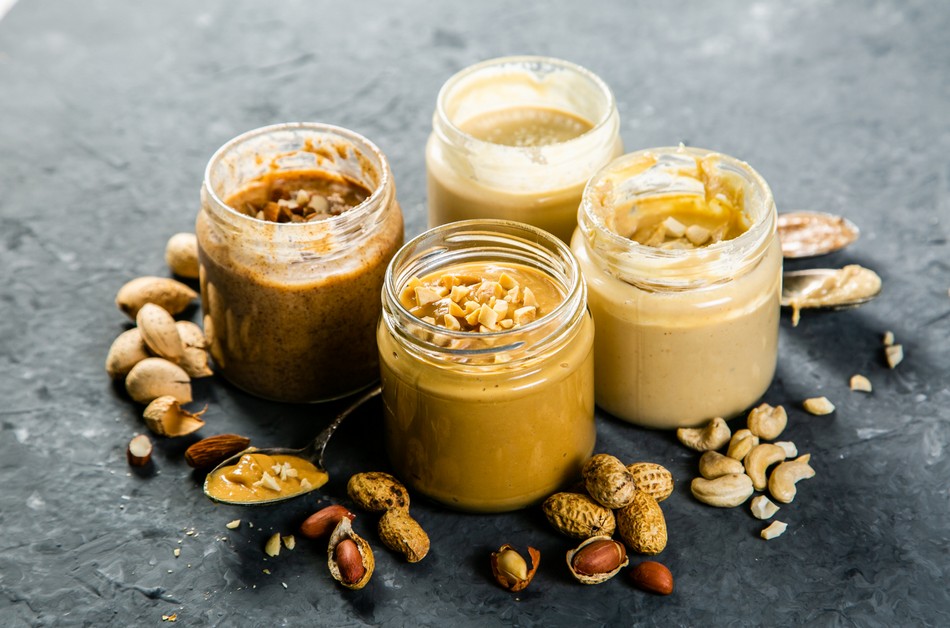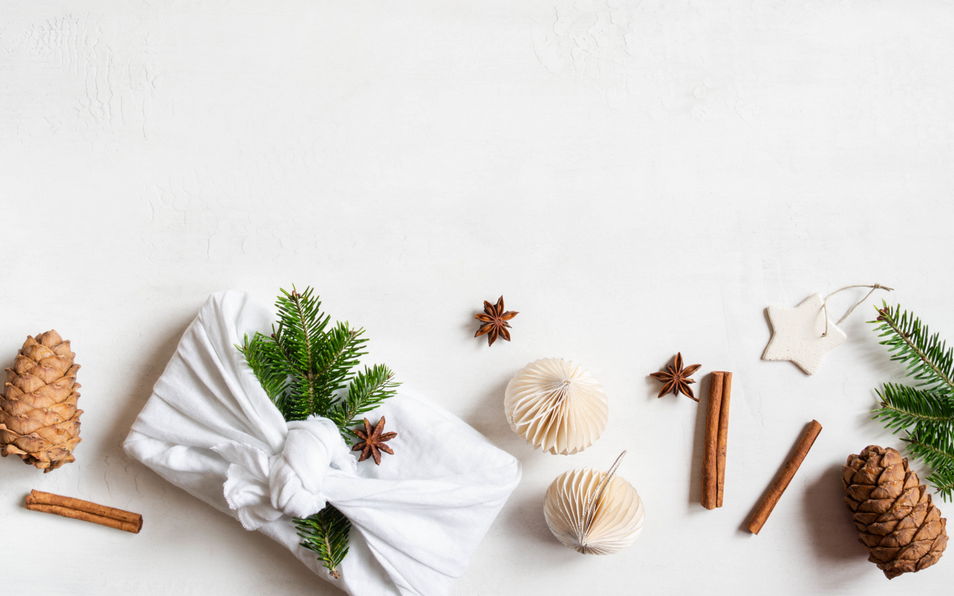Apparently when I was a baby, I developed such a bad nappy rash that I had to be without nappies for weeks. The horror of this story didn’t really hit me until I had a baby of my own. When at the age of 5 weeks old my daughter had the slightest sign of a red bottom, I jumped to action, knowing how brutal the worst case scenario could be. We’d had more than one friend give us Sudocrem Healing Cream as part of our baby presents. I’d heard numerous times statements like “you can’t use enough nappy rash cream”, and “using nappy rash cream after every change is the best prevention.” So, from then on, Isabella’s changes weren’t complete without a dab of Sudocrem…To be honest, I almost felt guilty for not having jumped on board with it earlier.
It was only when I started doing the research for my baby wipes post (an exercise which left me looking at all baby products with new eyes and scepticism) that I started to wonder about my daughter’s nappy cream. I soon found that I again had a lot to learn… from how to correctly use the nappy rash cream, to when to use it and also that some products had ingredients in them that definitely should be avoided!
The first thing I discovered was that I had been using the nappy rash cream incorrectly. It’s amazing how one can use a product and not read the instructions, only to keep doing the wrong thing because that’s what you’ve always been doing!
Firstly, nappy rash creams can be divided into two groups – those that are for prevention and protecting skin from moisture and can be used for every change if you want and for the treatment of mild nappy rash, and those that are stronger and made specifically for the treatment of more severe nappy rash. Some treatment creams have mild local anaesthetics, antibacterial and antifungal agents – not something you want to put on for every change, especially if your baby has delicate skin! However, unfortunately this is what I did on my daughter unknowingly for months with my use of Sudocrem. What the hell was I doing putting something with a local anaesthetic in it on my baby after every change?! Sudocrem’s advertising didn’t exactly tell me otherwise and I know I’m not the only one who mistakenly used Sudocrem this way…sigh. But knowledge is power and it’s better to know now so we can make the change today!
It’s not easy as a parent to recognise that you’ve been doing something you shouldn’t have. We all want to do the best for our children and their sensitive skin — and you can’t help but feel cheated when you find out that something you’ve been doing in good faith and thinking is right, isn’t quite the magic pill you thought it was. But here I am, writing this blog post because I got it wrong while trying to do my best. Hopefully this information can better educate us all so that we can make informed and safe choices for our babies.
When to Use Nappy Rash Cream
There are some excellent, safe non-toxic nappy rash creams available which are absolutely fine to use for every change to keep skin dry and irritation-free. Some babies have more delicate skin than others and get sore skin easily and by keeping a barrier there, baby stays comfortable. There’s no problem at all doing this if you have the right cream! The only problems are if you’re using a cream full of chemicals which aren’t safe to use on your baby all the time. Unfortunately, there are a lot of inappropriate creams out there, especially if you’re using a medicated cream daily instead of for the treatment of acute bouts of nappy rash.
What are the Ingredients We Want to Avoid?
Firstly, for a preventative cream, it doesn’t need any active ingredients. We’re just trying to create a barrier so the wet nappy or dirty nappy doesn’t cause a reaction on our baby’s sensitive or dry skin. There is absolutely no need to coat our babies in chemicals for the sake of it. When our baby gets a nappy rash, then something stronger may be indicated to treat their irritated skin. Unfortunately, just because a product is marketed as being for babies doesn’t mean it contains safe ingredients, so it’s important to do your research.
The Clean + Conscious Awards judging process looks at product ingredients in depth, as well as involves hands on reviews by myself and other experts on our own children. All the nappy rash products listed below I can happily recommend. Every child has different skin, so you may find one works better for you than another.
I will also point out what ingredients shouldn’t be in your baby’s nappy rash cream because they’re toxic and not appropriate to be used on babies – or adults for that matter! When looking at the ingredients list of nappy rash creams, there are certain ingredients (including active ingredients) that you should definitely avoid and ones which would be nice if they weren’t there.
When looking at a product’s ingredients, one of the databases I use has been made by a group called the EWG (Environmental Working Group) in the U.S and is called the ‘Skin Deep’ database. It contains information on over 150,000 chemicals in skincare products and includes toxicity ratings, risks, research and references to studies.
Ingredients to avoid
- Parabens: These actually have a weak hormone activity and have been detected in breast cancer tissues and have links to male infertility. They can also cause skin irritation. The EU have actually banned many types of parabens.
- Fragrance: This can be made up of hundreds of undeclared chemicals. Often including parabens and phthalates.
- BHA (Butylated Hydroxyanisole): Used as a preservative and fragrance ingredient. This is an endocrine disruptor and possible carcinogen.
- Boric Acid/ Sodium Borate: This is used as an antifungal agent. It is an endocrine disruptor and been linked to reproductive toxicity. It has been classified as not safe for use on infant skin.
Would be nice to avoid
- Propylene glycol: This is a skin, immune system and respiratory irritant. Propylene glycol also enhances skin absorption and so allows other chemicals to absorb into the skin more easily.
- Petrolatum: A petroleum product that is used as a moisturising agent. It doesn’t allow the skin to breathe, slows down the skin’s proper functioning and has a high risk for contamination.
- PEG compounds: These are used as thickeners. They strip the natural oils from the skin leaving it vulnerable. They are also potentially carcinogenic.
- Food Products in the ingredients lists such as goat’s milk, cow’s milk nut oils and oats. Studies have shown a link between the application of a potential food allergen repeatedly onto the skin and food allergen sensitisation. This increases the potential for severe food allergic reactions when the food is actually eaten. This is especially relevant for a child with a high risk of food allergy and also those with eczema.
Cloth nappy safe
Bottom balms used with cloth nappies should definitely not include petroleum products (which none of my recommended list does) as they coat the material and decrease absorption. A cloth nappy safe cream should also not include zinc as it can cause staining and is difficult to wash out of the material. If you are using cloth nappies and you want or need to use a cream for babies containing zinc, use a disposable liner so that you don’t damage the cloth.
Our recommended list: The Best Non-toxic Nappy Rash Creams
Clean + Conscious Winners 2024
GOLD: The Little Green Cream Co – Sati-Soothe
The LGC Co Sati-Soothe paste heals redness, soothes irritation and hydrates the skin with hemp seed oil, beeswax, vitamins, minerals and zinc oxide. 100% natural ingredients create a barrier to keep out moisture and lock in healing properties. (CONTAINS ZINC)
Read reviews from Experts on this product HERE.
SILVER: Weleda Calendula Nappy Change Cream
If ever one of the children has a red bottom, one application of this zinc based gentle cream with mostly organic ingredients and it’s gone by the next change! I’ve found it to be a fantastic overnight cream which will ensure no irritation.
The Weleda Calendula Nappy Change Cream is a rich cream which is still easy to wipe on and doesn’t leave marks on clothes like some other zinc creams. It has a mild, pleasant fragrance and works amazingly. This is a fantastic protective barrier cream which works so well and so quickly.
*This product contains almond and sesame seed oil. If you have a baby/child with a high risk of a food allergy or eczema, I would not recommend to use this product until they are eating these foods in their diet and show no allergy. Studies have shown a link between the application of a potential food allergen repeatedly onto the skin and food allergen sensitisation. This increases the potential for severe food allergic reactions when the food is actually eaten. This is especially relevant for a child with a high risk of food allergy and also those with eczema. (CONTAINS ZINC)
Read reviews from Experts on this Weleda Calendula Nappy Change Cream HERE
BRONZE: La Vaca Sana Organic Skincare – Soothing Nappy Rash Tallow Balm
The Soothing Nappy Rash Tallow Balm is a natural and non-toxic balm made with grass-finished WA tallow, WA organic beeswax, non-nano zinc oxide and organic coconut oil. It is gentle on delicate skin, perfect for relieving, healing, or preventing nappy rashes. Free from essential oils. (CONTAINS ZINC)
Read reviews from Experts on this product HERE.
FINALIST: Mamave – Bubba’s Barrier Cream
This nappy rash cream contains Calendula Extract, Zinc Oxide and Castor Oil to form a protective barrier and alleviate diaper and drool rashes on infants. (CONTAINS ZINC)
Read reviews from Experts on this product HERE.
FINALIST: endota – Protecting Barrier Balm
This organic barrier balm protects baby’s skin from acidic moisture, strengthening and hydrating their delicate skin barrier. Enriched with natural ingredients to prevent irritation. (CONTAINS ZINC)
Read reviews from Experts on this product HERE.
GOLD 2023 winner: Dermagen – Manuka Oil Balm
This hydrating balm soothes and relieves skin irritations, including dryness, itchiness, eczema, and dermatitis. It promotes skin rejuvenation and features antiseptic properties. Suitable for eczema, dermatitis, cold sores, pimples, and acne-prone skin. Alcohol, preservative, paraben, and acid-free formulation, making it safe for delicate or broken skin. (ZINC FREE)
Read reviews from Experts on this product HERE.
A note about baby powder
As for baby powder, there have long been links between the ingredient talc and ovarian cancer. The evidence has been so strong that Johnson & Johnson have been successfully sued over it. Even so, Curash and Johnson & Johnson still sell a baby powder containing talc! I would definitely avoid it. There are some baby powders containing cornstarch as a substitute which seems to be a safe ingredient, however make sure their other ingredients are safe too (I’ve seen lots containing ‘fragrance’). Powders can be easily inhaled and can be damaging to the lungs, so must be used with caution.
See our top recommended Baby products in our 2024 winners Directory here!
I’ve also done articles on choosing safe baby wipes, baby shampoos, non-toxic baby floats and paddling pools, reusable nappies and disposable nappies . If you found this helpful, you’ll love those too.
